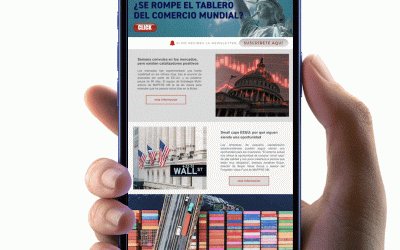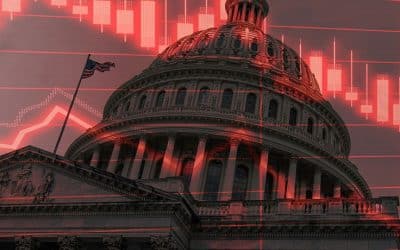The tariff war shakes the global economy and casts doubt on U.S. debt

Redacción Mapfre
Tariff earthquake
The tariffs are a problem that’s marking a major shift in the economic relationships we've built and developed over the past few decades. The U.S. President is using them as a tool to bring manufacturing back home and, in turn, boost government revenue through both direct and indirect taxation. But the ends don't always justify the means, and in pursuing these goals, the U.S. is now facing slower economic growth and rising inflation (Chart 1).
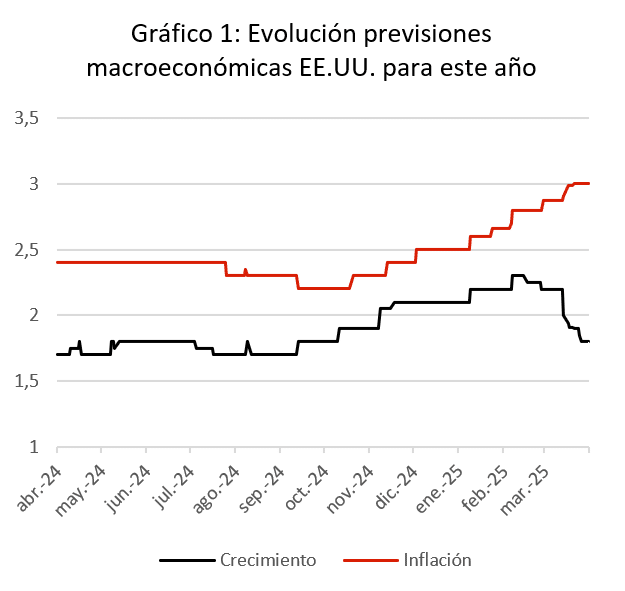
David Ricardo, the 19th century English economist, is best known for his theory of comparative advantage, which argues that international trade and specialization allow countries to export goods they can produce cheaply and import those they can't produce as efficiently. Thus, the long-term effects of trade barriers weigh heavily not only on the country that imposes them, but also on the rest of the world, as global markets face reduced opportunities to sell their goods.
This loss of competitiveness leads to higher prices and structural inefficiencies in the medium to long term, especially if these trade restrictions and tariffs remain in place. In the wake of President Trump's recent decision to delay tariffs on more than fifty countries for 90 days (though the base tariffs of 10% on all imports and 25% on automobiles and certain other goods remain in place), it's clear that the primary target is China. This is partially because China is the only country that has responded with reciprocal measures.
The Asian giant is facing a difficult economic situation, but this tariff war is something it’s been bracing for, as evidenced by Beijing's recent policy measures aimed at boosting domestic consumption and reducing the country's dependence on foreign trade. As for Europe, this marks the beginning of a period of negotiation and a window of opportunity that its leaders should seize to emerge stronger as a Union.
How are the tariffs affecting financial markets?
Volatility has skyrocketed due to growing uncertainty (Chart 2), with major stock market declines occurring rapidly, in barely a week's time. At first, government bonds acted as a safe haven, much like other currencies such as the Swiss franc and the Japanese yen. But in times of extreme risk aversion, asset behavior tends to become less "rational," as the sheer number of market participants making investment decisions causes correlations between different assets to rise.
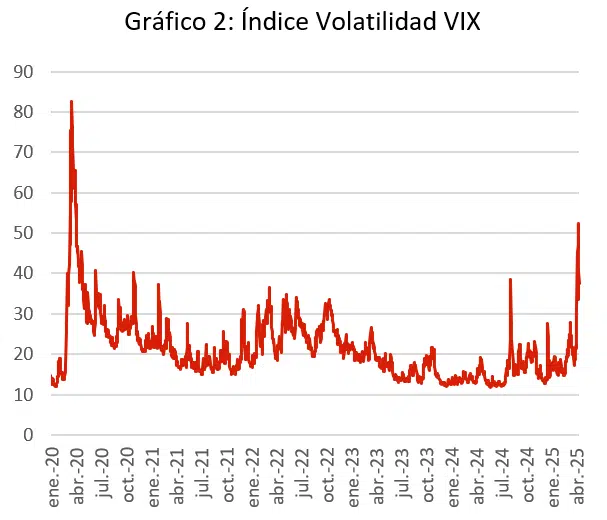
The performance of long-term U.S. bonds has been particularly striking (Chart 3), and this may be one of the reasons why President Trump chose to delay the immediate implementation of the new tariffs. While reducing the trade and budget deficits is a worthy goal, it shouldn't come at the cost of triggering a financial crisis in the world's most important market, U.S. government debt.
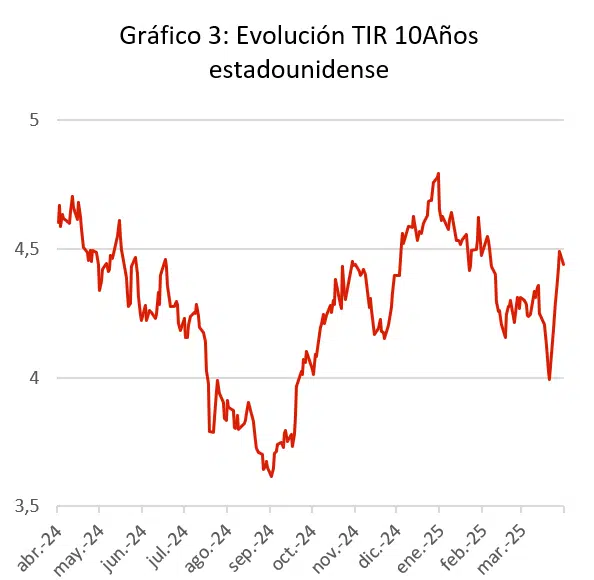
Many investors are now questioning the concept of "American exceptionalism" in light of the recent depreciation of the dollar, and whether U.S. bonds can still be relied upon as a safe haven. This is a crucial point, especially given that U.S. debt is continuing to grow (now at 124% of GDP). Despite strong economic performance in recent years, the deficit has remained stubbornly high at 7%.
Refinancing such a massive debt load will require a significant fiscal effort on the part of the United States. But if it has to do so at higher interest rates, and if the dollar continues to depreciate, making U.S. debt less attractive, the margin for error will become even narrower.
It’s still too early to draw definitive conclusions, but for now, it’s putting pressure on many investors who had skewed their portfolios towards U.S. assets (with a clear concentration risk) and had abandoned geographical diversification.
Can anything positive come out of this situation?
In the short term, it’s easy for emotions to take over, fueling the kind of negative sentiment that typically accompanies periods of heightened volatility and uncertainty. But looking ahead, there are potential bright spots. For example, some countries may choose to respond to these world trade barriers not by escalating the tariff war, but by stimulating their domestic economies, a path that the European Union appears to be taking. This approach is not only more rational, but also less emotionally driven.
These situations also present an opportunity to address certain imbalances that have built up over years of abundant central bank liquidity, conditions that have effectively eliminated any meaningful pricing of credit risk for both countries and companies.
This is actually very good news for active management. The ability to distinguish strong companies (and countries) from weaker ones offers a more efficient and thoughtful investment strategy than simply favoring the biggest names or the most heavily weighted stocks in market indices. In this sense, the apparent irrationality of the current situation could pave the way for a return to common sense, which would be a great opportunity.
Conclusion: Diversification, active management, and a long-term view
In such a volatile and uncertain time, it's important to stay calm and avoid making impulsive decisions. Rather than reacting to short-term noise, it's more effective to focus on the long-term horizon and the value of diversification through well-constructed portfolios designed specifically to weather periods like the one we're experiencing. This has always been, and will continue to be, the core of our approach.
What’s more, active management has the flexibility to sidestep the most impacted assets and identify new investment opportunities, making it a powerful tool that’s often been overlooked in recent years. We're still in a low-visibility environment, and the headlines are changing every day. But just as pulling off to the side of the road in dense fog can be more dangerous than moving forward slowly, now is not the time to freeze. Instead, it's the time to keep moving forward, with the support of sound advice to guide us, even when the road ahead isn't entirely clear.

